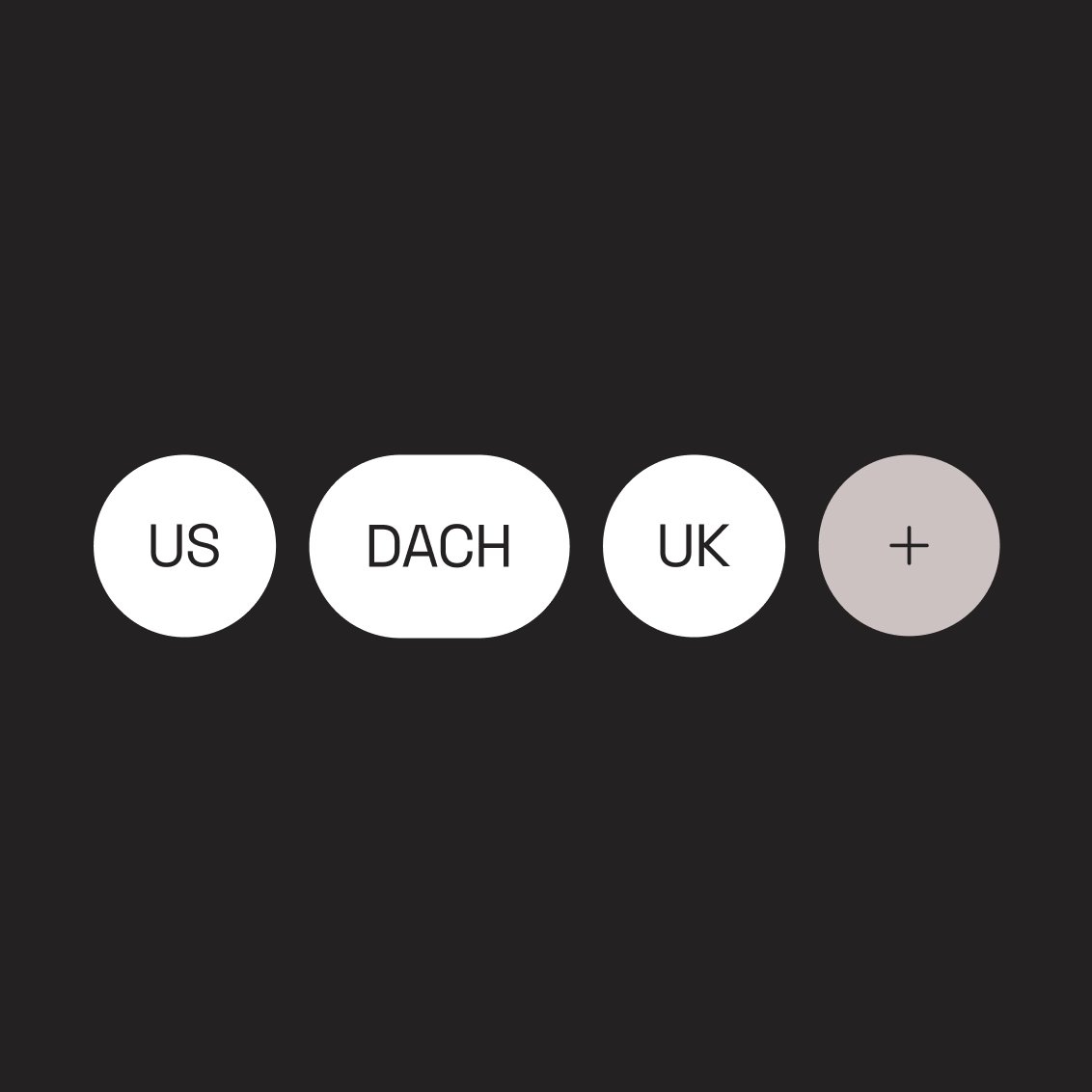But it’s not as simple as launching the exact same brand in a new market. Simon Gregory of BBH explained, “You can’t manage brands on a local level anymore... You have to think about every market you’re in.”
Because what resonates with your current audience may not relate to potential customers in new regions. Cultural nuances and changing tastes mean that companies often need to adapt their brand to connect with different regional markets. Brand marketers can follow our seven steps to successfully enter a new market with their global brand.
1. Learn about local consumer preferences
Consumer preferences and behaviors change across regional markets, so you may need to make several changes to suit the local market. Review your products, messaging, branding, and marketing strategy to understand whether they’ll align with consumer and cultural preferences in your new market.
For example, McDonald’s changes its menu to suit different regional preferences and adapt to cultural norms. Its Indian menu contains no beef items, as cows are considered sacred in Hindu culture. Additionally, 39% of Indians are vegetarian, so McDonald’s has many more vegetarian options on its menu than you’ll find in its US restaurants.
When learning about local preferences, it’s best to do research before entering that market. Digge Zetterberg, Director of Content & Communications at Frontify, explained, “We did a lot of research into the suitability of new markets before choosing where to expand. This helped us to select markets with maximal opportunity and lower risk profiles.”
Start by reviewing market research to understand the state of your new target market, identify competitors, and spot any challenges that you’ll need to consider. Then, if you’re confident this market is a good fit for your brand, bring local partners and experts on board to help you learn more about local preferences and cultural differences.
2. Define your local brand positioning
Your brand’s positioning in your home market may not translate into new markets, especially if it’s built on your company’s cultural values. So, you may need to adapt your core brand identity and positioning to suit local markets.
Start by reviewing your existing brand positioning. Look for elements that rely strongly on particular cultural values to identify aspects of your brand positioning that won’t resonate with your new market. Work with your local team members to develop a positioning for your brand that works for the local market and feels true to your global brand.
While it may feel like you’re creating a new brand for this new market, this isn’t the case. Instead, think of it as an extension of your brand. Any changes should still feel connected to your overall brand identity and values, not a complete departure from them.
You should also consider the perception of “foreign” or “global” brands in your new market. Some countries will view international brands as a status symbol, while others may think of them as saturating the market and taking away opportunities from home-grown brands. If foreign brands are viewed less favorably, you’ll need to consider how best to position your brand, perhaps in partnership with existing, trusted local brands.
3. Review your business and product names
You want your brand and product names to be easy to remember and pronounce in your new market. Otherwise, it will be hard to establish brand recognition and benefit from word-of-mouth recommendations. Additionally, you want to be confident that your brand or product names don’t accidentally mean anything inappropriate or offensive when translated — consider slang and dialects as well as literal translations.
If you find your product or brand names won’t work in your new market, you’ll need to rename them. Consider working with branding agencies in the local market or ones that specialize in international branding, as they’ll have experience in the regional market you’re looking to move into.
One example of a company that uses different brand names in different markets is Takeaway.com. In the US, it’s called Takeaway.com, while in the UK, it’s called JustEat, and in the German-speaking market, it’s called Lieferando. The different brand names communicate what the company offers, so it’s top of mind when customers are looking to order takeaway food.
4. Establish a global brand governance structure
Despite regional adaptations to your brand, you’re still sharing the same company with the same values, not building out a whole new company or sub-brand. Brand governance uses tools and processes to ensure consistency and integrity across a brand’s assets — even in local markets.
There are three common approaches to brand governance for global companies:
- “Light-touch” approach for local brands: Local brands keep their distinct brand identities rather than adopting a shared, centralized identity. This approach can be popular in markets with a strong preference for local brands, but over time, it introduces inconsistencies that can be difficult and time-consuming to fix.
- “Centralized” approach: A centralized team or agency partner produces all your brand materials with minimal adaptation for local markets. This creates a strong, unified brand identity but can reduce relevance for brands in some markets where their messaging doesn’t connect with the local audience.
- “Glocalization” approach: A hybrid approach that combines the best parts of global and local brands. Your global team may lead your glocalization strategy, but it’s a two-way process with local teams sharing ideas, insights, and best practices to strengthen the brand in their market. This approach relies on clear communication between both teams and a shared understanding of the brand.
The glocalization approach is becoming increasingly popular, allowing brands to adapt to local markets and customer preferences while maintaining a strong brand identity.
For example, while Takeaway.com uses different brand names across various markets, it uses the same vibrant orange color palette and keeps its recognizable logo in each market. This strategy helps build a powerful global brand identity despite significant variations from one country to the next.
Brand guidelines are an effective tool to improve brand governance across different markets. Start by identifying the most important parts of your brand identity. In this case, it’s likely to be visual elements because they’ll be instantly recognizable and unlikely to need changing for different regions.
Your logo, color palette, illustrative style, and brand imagery won’t change in your new market — unlike the written expressions of your brand identity, such as your tagline or brand promise.
Then, put together clear written guidelines to document these consistent brand elements. Guidelines will help people across the team (including localization agencies and translation partners) understand how to present and communicate your brand to different markets. They’ll know what can change to adapt to consumer preferences and what needs to stay the same to maintain a strong brand identity.
Brand guidelines are just one tool that can help with this. Brand management software is another option, as it gives everyone access to all your brand elements, guidelines, and resources.
5. Localize marketing campaigns and activities
Adapting your brand’s visual and written elements is just the first part of bringing an international brand into a regional market. The second part is considering how you communicate your brand — particularly through your marketing campaigns and customer-facing communication.
Your marketing messaging needs to be tailored to local interests and cultural preferences to keep conversion rates high and help your target audience connect with your brand. For example, second-hand car marketplace heycar operates in the UK and multiple European countries.
A recent blog article on heycar’s UK site reimagines FA Cup football teams as cars, focusing on a historic British football competition. But heycar’s Spanish site features an article about Leo Messi’s supercar, putting the spotlight on a celebrity sportsperson who played for almost 20 years for the Spanish football club FC Barcelona. Both articles are sports related, but they tie into the unique cultural preferences and common national interests of the respective markets.
To adapt your marketing campaigns and activities, start by reviewing your existing campaigns, design, and messaging. Make sure you consider the following:
- Visuals: Are you showing people who are representative of your audience? Are you being sensitive to cultural norms, such as showing women wearing head coverings in Muslim countries?
- Language choices: While many countries use English for business, consider translation into local languages to better connect with your new market. For translated content, remember that puns and idioms that work in your home market may not make sense in other languages.
- Marketing channels: Are any channels more common than in your home market? For example, WhatsApp is very popular in South America, but it’s less frequently used as a marketing channel in the US or Europe.
Market research combined with the expertise of local employees and partners can help you ensure the channels and messaging are a good cultural fit that will resonate with the new regional markets.
6. Don’t rely on Google Translate
Translating your website and marketing content is one of the most important aspects of connecting with regional markets.
Words and phrases that make sense in one language may not have a direct translation in another. This is especially true for idioms and colloquial expressions. So, instead of relying on Google Translate for all your content, you should work with native speakers to help you maintain the nuance, values, and feeling of your content in both languages.
Digge Zetterberg, Director of Content & Communications at Frontify, explained how she approached a translation project at a previous company to keep the quality high and ensure nothing got lost in translation: “We used internal resources for translation into English,” said Digge. “However, we outsourced other languages to a translation agency because we didn’t have the language skills in-house.”
If you’re translating existing marketing assets into different languages, treat it as a transcreation project rather than a verbatim translation. This is how we handled a recent project at Frontify, where we created a guide to building a strong employer brand in English, then worked with a German-speaking content expert to transcreate it into German.
You can choose from a couple of different options when translating and transcreating your content without relying on Google. You can work with local partners such as freelancers or translation agencies, or you can set up a local marketing department focusing on translating your existing assets. The best option for your company will depend on your budget, the content volume, and how heavily you want to build up your physical presence in the new market.
7. Enable local teams to represent the brand
As you move into a new regional market, your local team needs the tools, resources, and processes to consistently translate and present your brand to that market.
Make sure you have a two-way communication process between your local market and global team. This will make it easier for both teams to work together and learn from each other. The global team can communicate brand guidelines, while local teams and agency partners can report insights, learnings, and best practices from the new market.
Then, use these insights to put together clear, detailed brand guidelines specific to that regional market. These guidelines will help your international and regional teams understand how to create assets and properly represent your brand for that market. They’ll see the region-specific changes and variations to your international brand elements, messaging, and other creative assets.
The approach you take to documenting your local brand guidelines will depend on how much your branding (including visuals, messaging, and brand voice and tone) changes between regions. If there are a lot of changes, your best option is to create regional-specific guidelines, but if there are only a few smaller changes, you should be fine to integrate those variations into your centralized guidelines.
Get your brand governance right
When entering new markets, a lot of the localization work falls to the marketing department. When juggling translations, re-designs, and content rewrites, many tasks can feel overwhelming. For all of this, you need to better govern your brand locally as well as globally.

